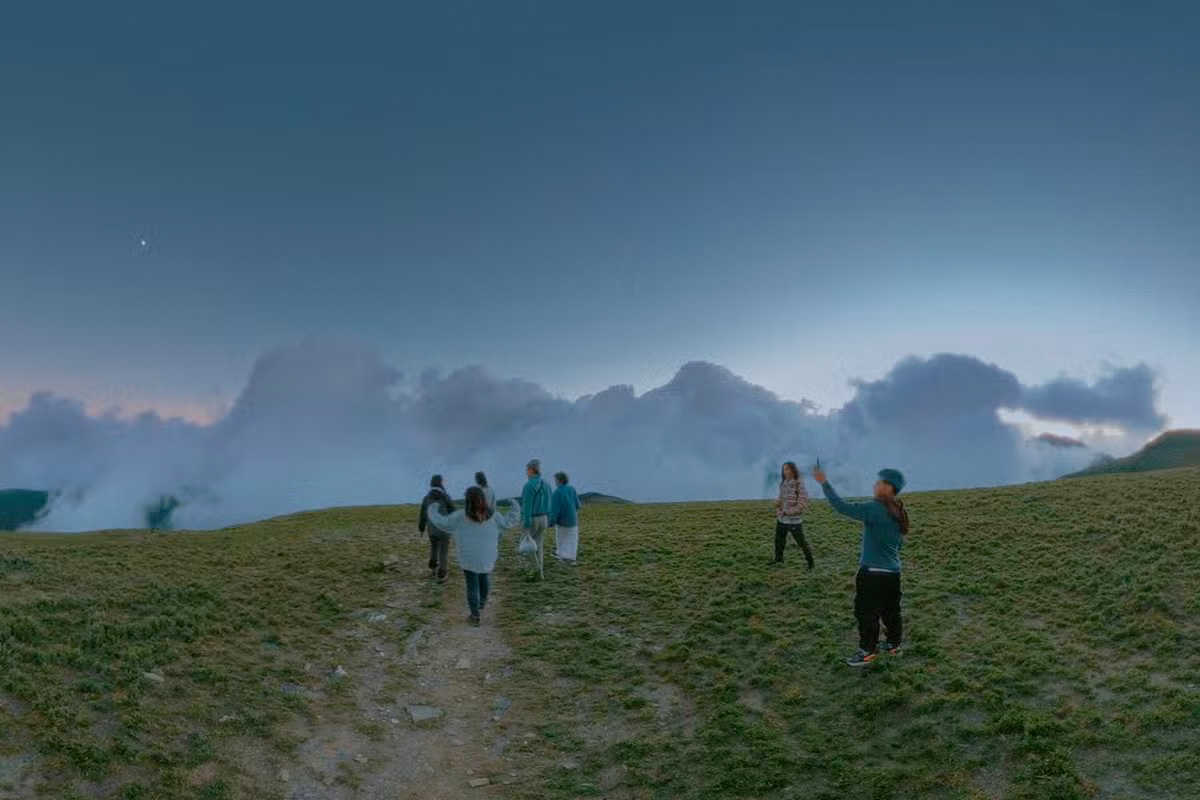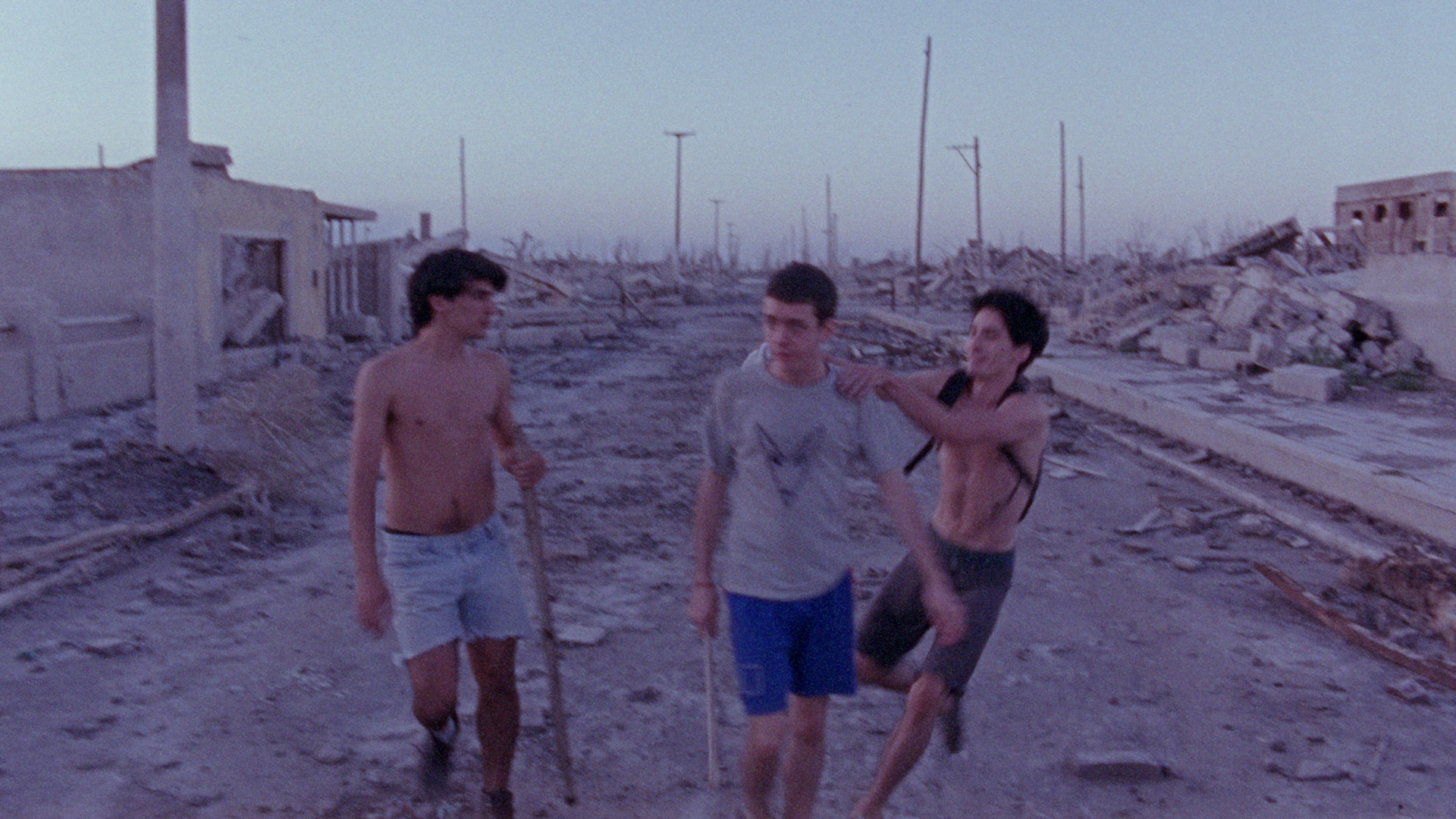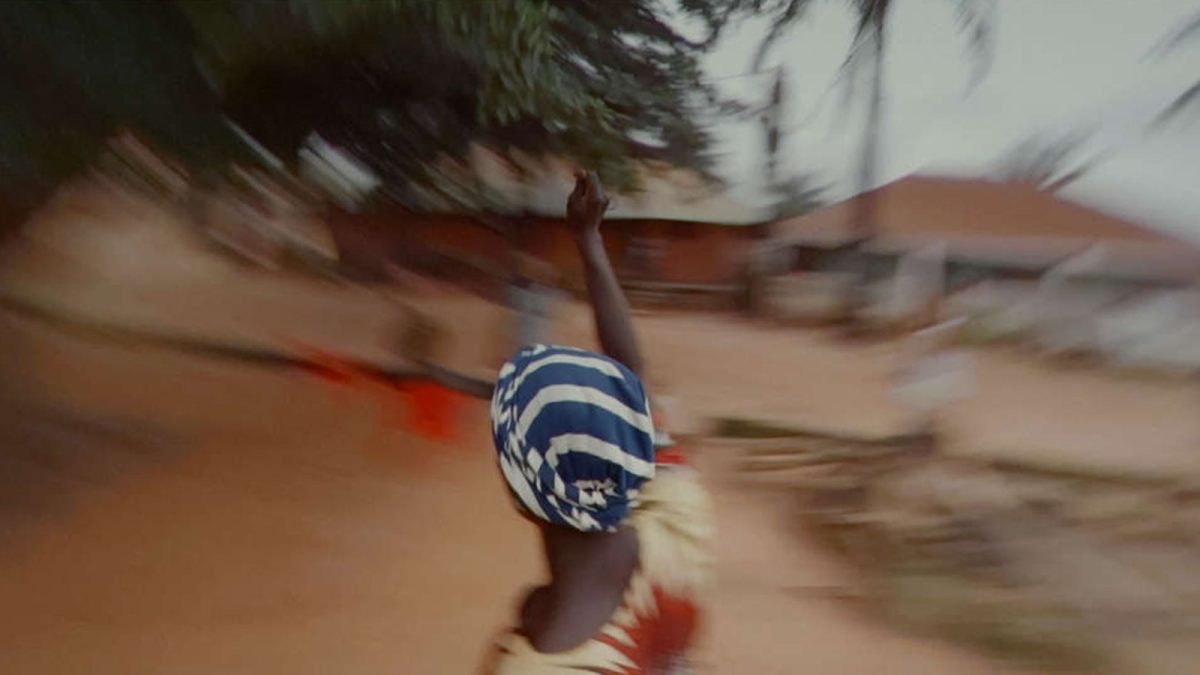A Whole New World
Interview with Eduardo Williams
Not-knowing is key to Eduardo Williams’ idiosyncratic worldbuilding. Through casually dystopian short films and otherworldly features, the acclaimed Argentinian filmmaker explores new paths in postmodern film grammar.

Eduardo Williams feels at home wherever he is. When we meet in a bustling Prizren, Kosovo, we are both guests of the documentary and short film festival Dokufest, which, for its 2024 edition, presented a complete retrospective of his oeuvre. For the past five years, the Argentinian filmmaker has been lauded at A-list festivals, but despite a continuous series of accolades, Williams still has both feet on the ground. Technically now based in Athens, he claims not to be based anywhere. “My last film, The Human Surge 3, was shot in [Peru, Sri Lanka, and Taiwan], and post-production happened in five [other countries]. I travel a lot.” This nomadic quality not only steers his life and work but also our one-hour stroll. As we walk along Prizren’s river—a stream, really—I strictly follow his directions, away from loud city sounds, always keeping our audio recording in mind.
It’s a pleasure to wander through Williams’ globetrotting films, too. When introducing one of them at Dokufest, he urges the audience to surrender: “You will be lost,” advising us to embrace his anything-can-happen non-narrative approach from the get-go. “I do care about the audience, but in my own way. Being lost is a good thing,” he explains. What Teddy—as he prefers to be called—really proposes is for the audience to find their own path through the cinematic journey on offer. “Or find your way around the confusion if you are confused.” No wonder it is generally hard to explain what his films exactly entail, though they typically share an otherworldly texture that feels liberating. You must encounter his radical yet beautiful explorations head-first to realise you were looking for them all along.
At 38, Teddy has now two mesmerising feature films and two handfuls of equally rich shorts to his name. In the film festival world, he rose to fame when his feature debut, The Human Surge, premiered at Locarno in 2016 and won him the Golden Leopard. A nonlinear commentary on post-modern ennui, our virtual footprint, and globalisation, the film is a unique visual adventure on which he builds further in its semi-sequel and shot on a spherical 360-degree VR camera, The Human Surge 3—don’t go looking for the second part; it doesn’t exist.
In the latter, characters pop up on different continents seemingly effortlessly, though the film never lets on their exact whereabouts. “If I were to tell the audience where we are, they would already see everything from the lens of what [they] think that country is like—whether that is good, bad, or neutral. I don’t want that. What I like is connecting places, putting them in relation to one another, and creating new possibilities.”

Could See a Puma (Eduardo Williams, 2011)
Before venturing into features, his short films, such as the cryptically poetic Could See A Puma (2011), already introduced Williams’ idiosyncratic film grammar. The casually dystopian work, in which a group of young boys descend from the high roofs of their neighbourhood to the deepest caverns of the earth, naturally feels like a good place to start with his oeuvre. At one point, two boys disappear as if swallowed by dirt, like the rapidly drained health bar of a video game character. Such a curious blend between reality and fantasy—the characters never question their apocalyptic surroundings, making the abnormal circle back to normal again—distinguishes the director’s approach to cinematic language from others. “The main idea here is doubt. What is this place? Why don’t they mention it? Is it normal for them, or is it because they don’t see the same thing I see? Doubts about what the image tells you are crucial to my cinema.”
With doubtful transcontinental perambulations so central to his free-floating narrations, it feels fitting to be sharing a conversation with Williams while strolling through a city whose cultural fabric I’m still getting to understand. Though they might not know where to, Williams’s cohort of characters is always on the move. As a leitmotif, constant movement is something that unconsciously entered his work. “Maybe video games were an influence,” he hints. Indeed, there is an avatar-like tendency to the people we see on-screen, as they seem to mindlessly teleport from one side of the world to another in The Human Surge 3. Often framing them through a wide, fish-eye or 360-degree camera lens, in many of his works, the characters cannot hide anywhere or anything, and the world is their playground.
Though constantly following people, the camera remains independent, enlarging or shrinking its proximity to the characters, often abandoning them to discover other things or find new subjects. Williams’ proverbial camera is alive and breathing, its operator close to visible. “The camera is not a floating machine; I like to feel there’s a person there,” he explains. In I Forgot! (2014), set in Hanoi, we are closer to Williams’ characters than in any of his other films, even though they themselves vaguely remember each other’s names. Youngsters are climbing up and jumping on rooftops, all the while challenging the weight of everyday life. In the end, however, the camera simply floats away. In tune with the teenagers, it wanders off aimlessly—a move that echoes the ending of The Human Surge, when the camera rolls down a hill.
When we allow ourselves not to rely on the camera for guidance, we learn that not-knowing is part of knowing: a credo crucial to understanding how Williams works. “People get the idea that everything [in my films] is totally improvised, because I so often talk about not-knowing. But there’s always something that I’m trying to create,” he adds. This irrational gut-feeling quality to his decision-making pushes him forward. It would take all the cast and crew three days to walk and camp out in the wilderness to reach a certain Brazilian mountain top to shoot the final scene of The Human Surge 3. “Producers tried to convince me to do something more simple, but this was one of those instances that I was very certain. Even though I could of course not know exactly what the effect would be.”

I Forgot! (Eduardo Williams, 2014)
A similar feeling of not knowing also drives the characters in That I’m Falling? (2013), which is coloured by, yet again, existential boredom. No longer swallowed by dirt, a young man emerges from the underground to embark on a long digestive trip with his friends. They seem lost, like many of the people in Williams’ films. “[The protagonists in That I’m Falling?] are not doing anything [that is seen as] productive. That’s probably a vantage point for all of my films somehow. The idea of not being sure where you want to go, but you are very sure about wanting to go somewhere else.” It’s not just escapism—a notion so embedded in cinematic history—for escapism’s sake. Born from an Antonionian ennui, Williams’s longing for other places goes beyond classical weltschmerz, as he proactively suggests new conjunctions in our (over-)globalised world. We all come from the same place anyway, and Williams is just helping us to connect the dots.
Though described earlier as casually dystopian, Williams’ films cleverly counterbalance 21st-century existentialism with hope. What ultimately renders them hopeful is a proposal of an alternative to the status quo, while critiquing the work-life imbalance many of us suffer from. “We are so used to repetition, both in cinema and in life. It gives me hope to present something new and different. It’s why I do cinema. It is a privilege to have an interesting job or even free time. Sometimes you cannot really have a different life, but imagination offers a way out of the life that many people are forced to have.”
Proposing new realities that go against the norm is only one of the ways Williams’ work opens up to a queer gaze. For his latest, he imagined everyone in it to be queer in a new way—queerness had to inherently just be there. “For me, [The Human Surge 3] was about how queerness is exposed in different places in the world, no matter the context.” With characters from different cultures popping up in each other’s habitats, a global queer community slowly unfolds before our eyes. “I was trying to create a bit of a fantasy where being queer is more present. Something important for me is that we can be queer, but we don’t always need to be in films [that are explicitly about] queerness. It is part of the film, and we’re not hiding it, but it’s not only about that.” In a way, Williams reclaims the idea of “othering”—again circling the “not-normal” back to the “normal”.
A more explicit form of queer representation is present in Parsi, the 2019 short based on a poem by Mariano Blatt. The cumulative text—meaning its verses are added over days, months, and years—specifically mentions queer slang such as ‘twink’ and ‘BelAmi’, recited in the film as if almost in one breath. “When I made Parsi, I was more directly connected to a group of queer people from Bisao. Sometimes, the poem is very much related to Buenos Aires, sometimes to something much larger. I was just curious about connecting different things and seeing how this relationship would evolve and what would happen.” Similarly to The Human Surge 3, connecting different countries and continents from the Global South is part of the film’s structure—a liberating feat for yet another form of representation. “I’m just always curious about places that we don’t get to see very often. But when people talk about the Global South, that label is only something I learned by going to the Global North,” he laughs.
As a film, Parsi visually creates another poem that spirals around its audio track. In many ways, formally and thematically, the short film is a predecessor to The Human Surge 3, as both films experiment with a 360-degree VR camera, a spherical device that captures video using eight lenses radiating outward from its center and allowing for framing scenes in post-production rather than during the shoot. Entering the fish-eye footage wearing a VR headset, Williams, in a highly unconventional way, reframed (and edited) each image while moving his body around. It’s one of the most explicit examples in his quest through unexplored paths, queering cinema’s formal grammar.

Parsi (Eduardo Williams, 2019)
We often herald the short film format, when compared to its feature-length counterpart, as a freer space for formal and narrative experimentation. Remarkably, Williams’ consistent fiddling with the audiovisual language and its predestined conventions hasn’t disappeared when transitioning to the longer form. “I hear it often that filmmakers feel less free when they move to features. I don’t have that. I always have the intention of doing the film I would like to see and to do something I haven’t seen before. However, the more immediate way of making short films, compared to features, is that it brings a different connection to how ideas flow. And yet, I make my feature films rather fast, too.” To not let his creativity die out while waiting in funding limbo, Williams often starts filming before money is in place. No time to lose.
It feels right that Williams turns to cinema to counterbalance his creative hunger. “I love slow moments in film. Nowadays, the only place where we have these types of rhythms is the cinema. Everything else is anxiety and speed. It’s good to have slower spaces to balance that out. That’s what I like about cinema: it takes you into a different rhythm of thinking and feeling.” When we finally sit down, and the sun starts to disappear behind the mountain tops, off go his slippers. He has been in Prizren for some days, after all; this is home, in a way.
